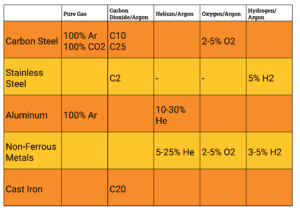FAQ
Search / Filter
Carbon Dioxide Nonsense
You need a leak check buddy. Do you have your leak check buddy?
Safety concerns take up a fair amount of my time as the safety program manager here at McDantim. We work with high-pressure gases, asphyxiant gases, and normal office dangers, like papercuts and standing on wheelie chairs when no one is looking to water one of the 25 plants in my office. Now, the last concern is totally directed at me being a lazy dum-dum who doesn’t want to go get a step stool late on a Friday afternoon, but I SHOULD KNOW BETTER. We are fortunate to have checks in place to make sure everyone is safe on and off-site. We don’t go off-site very often, but when we do, it’s for training purposes: draught system troubleshooting or installs with our administrative staff so we can help you as much as possible. Plus, information and education are our pride points to provide the best customer service we can. While off-site, we have portable CO2 monitors for our employees to wear. Not all coolers are equipped with CO2 monitors, so better safe than sorry.
We get a fair amount of tech calls about leaking systems. These calls are always a little nerve-wracking for us because of the hazards associated with CO2 intoxication. “If you think you have a leak, have someone with you or watching you while you check.” We had a horrendously distressing tech call a few months back where an end user thought she had a leak. She went into the cooler and felt a little dizzy and called us for assistance. Dan took this call and told her to have someone with her or watch her while she checked. While on the phone, the other line disconnected. We proceeded to freak out here at McDantim, and her employee called and said she was passed out on the floor in the cooler. Holy crap on a cracker. Get her out of there, call 911. Call us back. Thankfully, she is fine. I even talked with a gal here in Montana who was driving to a beer fest, transporting her CO2 and jockey box in the car when she started feeling dizzy. She knew to roll down her windows and pull over to check the CO2 cylinder, which was leaking.
We want you to be safe when you check your system. We use CO2 Meter for our CO2 monitors at our facility and for out-of-office troubleshooting.
Written by Kayla Mann; June 2019
Selecting a blend for your shield gas depends on your material and welding process. Having the correct blend for your shielding gas helps increase the penetration of the welds, reduces the number of defects in the welds, and helps block out any of the naturally occurring gases in the atmosphere like Nitrogen and Oxygen.
Common welding materials include mild steel, stainless steel, aluminum, copper, and cast iron which all can benefit from mixed gas. The most used gases are Carbon Dioxide and Argon, but we’ve also seen mixtures with Helium, Hydron, or Oxygen in small percentages to increase the heat and penetration of the welds. We’ve built thousands of industrial blenders, specifically for welding, with a variety of gases and blends. Our panels can work with any application, whether you are using MIG/MAG, TIG, Arc, or laser.


